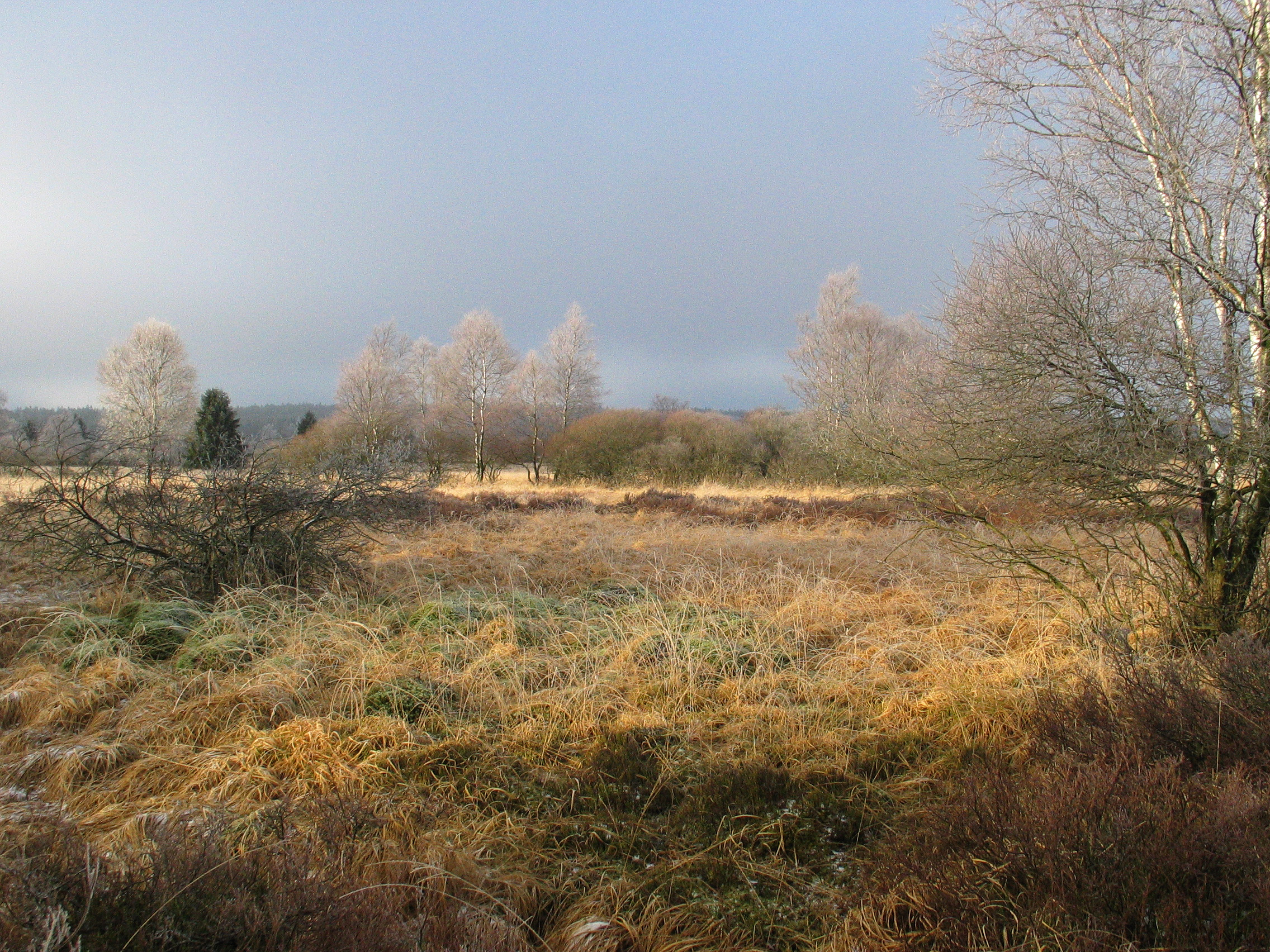Total CO2 emissions from the half million km2 of degraded peatland globally exceeds 2 Gtons. Restoration of this resource is therefore critical for both biodiversity conservation and carbon emissions reduction and sequestration.
Peatlands occur everywhere in the world, and I remember as a young boy visiting the nature area “Hoge Venen” in the Belgian Ardennes. We would often travel on a Sunday from southern Netherlands where I lived to Belgium and spend the day walking in a beautiful nature area. I have no photos from those days, but found the following photo by Alina on Wikipedia: (http://en.wikipedia.org/wiki/High_Fens)
Peatlands have been modified in many cases. Peatland was traditionally used mainly for grazing, but more recently for agriculture and forestry as well. There were times when peat was dug for fuel and it is a popular medium for horticultural production.
Recently, the enormous values of peatlands have been better recognised, and the role of peatland restoration as a cost effective nature-based solution to climate change will be addressed during a workshop on 7 September 2012 at the IUCN Congress in Jeju (http://www.iucnworldconservationcongress.org/).
This workshop (http://www.iucn.org/about/union/secretariat/offices/europe/europe_at_the_congress/member_s_activities/?10431/WORKSHOP-Peatland-restoration-a-nature-based-solution-to-climate-change) will share new conclusions, recommendations and outcomes from the IUCN National Committee for the UK Peatland Programme and discuss with participants how these can be utilized by countries and regions around the world.
The IUCN UK Peatland Programme was set up in 2009 to promote peatland restoration in the UK. The Programme advocates the multiple benefits of peatlands through partnerships, strong science, sound policy and effective practice.
The work of the Peatland Programme is overseen by a coalition of environmental bodies including the John Muir Trust, Scottish Wildlife Trust, Yorkshire Wildlife Trust, RSPB, North Pennines AONB Partnership, Moors for the Future, Natural England and the University of East London.
The programme operates under the auspices of the IUCN National Committee of the UK and if you want more information, you should visit the home page on: http://www.iucn-uk-peatlandprogramme.org/

Peatland restoration is not only important for greenhouse gas emission reduction, but also for water management and biodiversity conservation.
The Commission of Inquiry on Peatlands gives a lot more information:
http://portals.iucn.org/2012forum/sites/2012forum/files/documents/IUCN%20UK%20Commission%20of%20Inquiry%20on%20Peatlands%20Full%20Report%20spv%20web.pdf
Alue, you make some very important points and we fully intend to explore some of the these issues in the Workshop on peatlands in Jeju at the World Conservation Congress. Restoration of tropical peat swamp forests is a global conservation priority which will yield multiple benefits for carbon, water, biodiversity, air quality and the quality of life of both immediate local communities and city dwellers in SE Asia. I hope to meet you in Jeju, but if you are not attending please feel free to provide the IUCN UK Peatland Programme with your contact details and we’ll send you reports and keep you updated on progress.